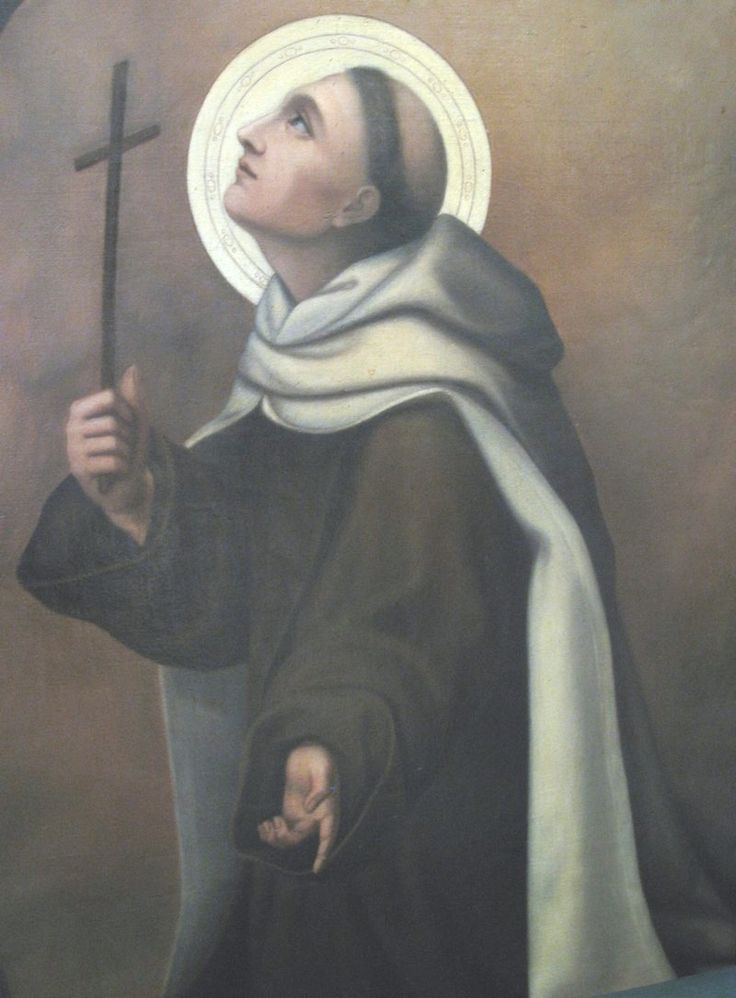Saint of the Day – 14 December – (1542-1591) Doctor of the Church – Carmelite monk and Priest, Religious Founder, Writer, Poet, Mystic, Apostle of Contemplative Prayer. Also known as • Doctor of Mystical Theology • John della Croce • John de la Croix • John de la Cruz. Patronages – • contemplative life, contemplatives• mystical theology, mystics• Spanish poets• World Youth Day 2011• Segovia, Spain• Ta’ Xbiex, Malta. Attributes – eagle, Crucifix, Cross, Carmelite habit. John of the Cross is known for his writings. Both his poetry and his studies on the growth of the soul are considered the summit of mystical Spanish literature and one of the peaks of all Spanish literature. He was canonised as a saint in 1726 by Pope Benedict XIII. He is one of the thirty-six Doctors of the Church, added by Pope Pius XI in 1926. His works are • Ascent of Mount Carmel• Dark Night of the Soul, Book 1 • Dark Night of the Soul, Book 2 • A Spiritual Canticle of the Soul and the Bridegroom Christ.

St John was born Juan de Yepes y Álvarez into a converso family (descendents of Jewish converts to Christianity) in Fontiveros, near Ávila, a town of around 2,000 people. John’s father had been disowned by his wealthy Spanish family when he married a poor weaver rather than a woman of equal economic status. Living in poverty proved to be too much for him and he died shortly after John was born. John spent much of his youth in an orphanage, where he was clothed, fed and given an elementary education. At the age of 17, he found a job in a hospital and was accepted into a Jesuit college. In 1563 he entered the Carmelite Order. Eventually he enrolled in another university, where he did so well that he was asked to teach a class and to help settle disputes.
Ordained a Carmelite priest in 1567 at age 25, John met Teresa of Avila and, like her, vowed himself to the primitive Rule of the Carmelites. As partner with Teresa and in his own right, John engaged in the work of reform and came to experience the price of reform: increasing opposition, misunderstanding, persecution, imprisonment. John was caught up in a misunderstanding and imprisoned at Toledo, Spain. During those months of darkness in that little cell, John could have become bitter, revengeful, or filled with despair. But instead, he kept himself open to God’s action, for no prison could separate him from God’s all-embracing love. During this time he had many beautiful experiences and encounters with God in prayer. He came to know the cross acutely—to experience the dying of Jesus—as he sat month after month in his dark, damp, narrow cell with only his God.
Yet, the paradox! In this dying of imprisonment John came to life, uttering poetry. In the darkness of the dungeon, John’s spirit came into the Light. There are many mystics, many poets- John is unique as mystic-poet, expressing in his prison-cross the ecstasy of mystical union with God in the Spiritual Canticle.
But as agony leads to ecstasy, so John had his Ascent to Mt Carmel, as he named it in his prose masterpiece. As man-Christian-Carmelite, he experienced in himself this purifying ascent; as spiritual director, he sensed it in others; as psychologist-theologian, he described and analysed it in his prose writings. His prose works are outstanding in underscoring the cost of discipleship, the path of union with God: rigorous discipline, abandonment, purification. Uniquely and strongly John underlines the gospel paradox: The cross leads to resurrection, agony to ecstasy, darkness to light, abandonment to possession, denial to self to union with God. If you want to save your life, you must lose it. John is truly “of the Cross.” He died at 49—a life short, but full. AND his reforms of the “Discalced” Carmelites revitalised the Order. He was proclaimed a Doctor of the Church by Pope Pius XI on 24 August 1926.





2 thoughts on “Saint of the Day – 14 December – (1542-1591) Doctor of the Church”